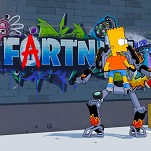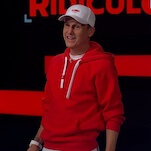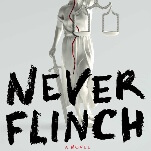Neal Stephenson: Quicksilver: Volume One Of The Baroque Cycle

"I love reading novels. You can understand them without thinking too much." So claims philosopher and mathematician Gottfried Wilhelm Leibniz, one of the real-world savants fictionalized in Neal Stephenson's expansive new Quicksilver. His comment almost amounts to a joke at the reader's expense: Understanding Stephenson's books, and Quicksilver in particular, does in fact require thought, focus, and an increasing amount of mathematical acumen. The follow-up to the author's hefty 1999 novel Cryptonomicon, Quicksilver spans more than 900 pages of history-based adventure, complete with maps, royal family trees, and geometrical diagrams illustrating Isaac Newton's mathematical proofs. It might not have challenged Leibniz, who, like Newton, is said to have independently discovered differential and integral calculus. But it's no Sidney Sheldon beach novel, either. Cryptonomicon provided a complicated introduction to cryptography through historical events and fictional characters–most prominently, several generations of two interconnected families, the Shaftoes and the Waterhouses. Quicksilver, the first installment in a trilogy scheduled to come out at six-month intervals, lacks a similarly unifying focus, but it uses familiar tools. The book begins in 18th-century America, where mysteriously long-lived Cryptonomicon character Enoch Root is summoning Massachusetts Puritan Daniel Waterhouse back to his British homeland to mediate a critical rift between Waterhouse's old friends, Newton and Leibniz. On the journey, Waterhouse reviews his life, from Charles I's beheading to James II's deposal, including his heady, dangerous days at Cambridge with the obsessive Newton, and his subsequent natural-philosophy studies with the likes of John Wilkins and Robert Hooke. Meanwhile, vagabond Jack Shaftoe (who, thanks to a gruesomely botched syphilis "cure," is more famously known as Half-Cocked Jack) rescues a harem-slave named Eliza and crosses Europe with her, taking up with Leibniz along the way. A working knowledge of European history circa 1660 to 1690 is helpful, though not crucial, in navigating Quicksilver: Large-scale political and social shifts are seen primarily from Daniel, Jack, or Eliza's points of view, and their limited perspectives sometimes make them poor conduits for full comprehension of the historical issues. But in his usual form, Stephenson makes them excellent conduits for compelling, entertaining stories and impromptu tutorials. Quicksilver lets Stephenson present a detailed interpretation of mid-17th-century European science, politics, and sociology, pausing along the way for diversionary lessons in cryptography, religion, mathematics, etymology, alchemy, genealogy, and any other topics that catch his interest, including the various chemical and metaphorical uses of quicksilver. Quicksilver is a dense book, weighty with ideas and events, but it also speeds along merrily with colorful anecdotes and adventures, and it presents its heavier topics with crisp clarity, though not always a clear purpose. At times, Quicksilver just seems to be a random, though stylish and effective, collection of Stuff That Interests Stephenson. But as usual, his lively writing proves more than capable of showcasing his own interests so that others can comfortably share them. Okay, maybe even without "thinking too much."







































